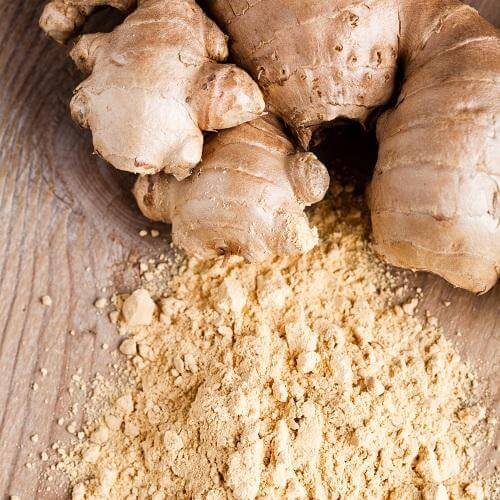Natural Ways to Treat Migraines


Written and verified by the doctor Nelton Abdon Ramos Rojas
In today’s article, we’d like to talk about natural ways to treat migraines.
First of all, migraines are a different type of headache associated with unbearable pulsating pain commonly located in only one part of the head.
And which can cause us to vomit and become extra sensitive to light, noise, and smell.
When we suffer from migraines, we usually prefer silence and a dark room. The process generally puts us out of commission for between 6 and 48 hours.
Second, on occasion is preceded by a series of symptoms that are known as “aura”, indicators that warn us of an imminent migraine.
Read also: 7 Natural Remedies for Persistent Headaches
Possible Causes of Migraines
- Migraines more commonly occur in women and sometimes will begin at early ages.
- The hereditary factor has a large influence on the appearance of migraines.
- Migraines are due to abnormal cerebral activity, based on disturbances on certain nerve pathways and surrounding tissues.
- Stress is without a doubt a factor that can provoke strong migraine attacks.
- Liver problems.
- Hormonal changes.
- Problems with vision, sometimes from working too many hours in front of a computer screen.
- Poor nutrition.
What Can Trigger a Migraine?
- A stress-filled day.
- Changes in our sleep cycle.
- Fasting in the mornings.
- Being too long in the sun.
- Menstruation, including the use of contraceptive pills.
- Certain foods like cocoa, dairy products… and above all, foods containing thiamine, (red wine, aged cheese, fish, chicken livers, figs…).
- Bright lights, strong odors, loud noises, and sounds.
Remedies to Treat Migraines
Natural Painkillers
Ginger: Possibly the most effective natural painkiller that can be found, and is excellent for migraines. You can, for example, prepare a ginger tea two times a day by boiling water and leaving the ginger root to steep for a few minutes, then strain and drink slowly. It can help you treat migraines.
- Mint: A great sedative. You can make infusions with it, but a mint essential oil massage on the neck is perfect for relaxing, and inhaling its vapors is also very effective.
- Lavender, Lemon Balm, and Lime Blossom: All of these have a nice sedative effect. If you combine them and take them every five hours, little by little, you will see a decrease in your pain.
- Cat’s Claw: Ideal for migraines: it reduces swelling and calms the pain.
- Marigold: Perfect for relaxation and alleviation of pain. It is good to take two cups a day, by taking a handful of leaves and heating 1/4 cup of water, filter out the leaves after steeping and drink slowly.
- Lavender Oil: You can apply it to your forehead as a compress, an ancient remedy for alleviating pains from migraines.
Proper Nutrition to Fight Migraines
- Vitamin B2: Investigations conducted by the University of Belgium concluded that all foods containing vitamin B2 significantly reduce the pain of headaches. Where do we find this vitamin? In those foods that contain riboflavin, that is sardines, lentils, salmon, bass, mushrooms.
- Vitamin B6: Necessary for increasing serotonin levels, which erase the onset of pain. We can find it in cod, tuna, trout, baked potatoes (with the skin), broccoli, asparagus, turnips, whole grains, sunflower seeds, bran.
- Magnesium: Indespensible. According to many studies, when we suffer stress, it blocks the production of magnesium, which comes directly from physical pain, and more specifically, from headaches. Where can we find magnesium? Take note: brewer’s yeast, sunflower seeds, nuts, brown rice, dried chestnuts. You can also find magnesium supplements at the drug store or pharmacy that can help you prevent migraines.
Read also: 7 Tips for Making Heels Painless
Daily Diet To Follow to Prevent or Possibly Treat Migraines
- Before Eating: Freshly-squeezed lemon juice, which helps cleanse our body.
- Breakfast: A cup of oatmeal and a piece of fruit.
- Lunch: Vegetable broth, fresh salad, and salmon.
- Don’t forget to drink a lot of water: Hydrating properly is vital, especially if you have vomited due to the pain of a migraine.
- Dinner/Supper: Steamed vegetables, sandwich with whole wheat bread, and a cup of almond milk
- Before Bed: A fresh apple and one of the aforementioned infusions.
Foods to Avoid
- Sugary drinks.
- Chocolate.
- Cured meats.
- Aged cheeses.
- Tomato sauce, dressings, and marinades.
- Lunchmeats.
- Energy drinks.
- Whole cow’s milk.
- Black tea.
In conclusion, we recommend that you reserve one hour of the hour of your day to do some form of exercise: bicycling, walking, etc.
Moreover, it will help relax you a bit more, and since migraines are very linked to the stress factor.
Therefore, it is very important that we redesign our lives to be more peaceful.
All cited sources were thoroughly reviewed by our team to ensure their quality, reliability, currency, and validity. The bibliography of this article was considered reliable and of academic or scientific accuracy.
- Sutherland HG, Albury CL, Griffiths LR. Advances in genetics of migraine. J Headache Pain. 2019 Jun 21;20(1):72. doi: 10.1186/s10194-019-1017-9. PMID: 31226929; PMCID: PMC6734342.
- Maasumi K, Tepper SJ, Kriegler JS. Menstrual Migraine and Treatment Options: Review. Headache. 2017 Feb;57(2):194-208. doi: 10.1111/head.12978. Epub 2016 Dec 2. PMID: 27910087.
- Schoenen J, Jacquy J, Lenaerts M. Effectiveness of high-dose riboflavin in migraine prophylaxis. A randomized controlled trial. Neurology. 1998 Feb;50(2):466-70. doi: 10.1212/wnl.50.2.466. PMID: 9484373.
This text is provided for informational purposes only and does not replace consultation with a professional. If in doubt, consult your specialist.










